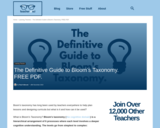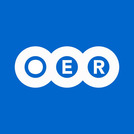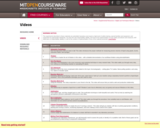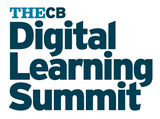
CI/CA Submission
- Subject:
- Higher Education
- Material Type:
- Primary Source
- Author:
- Jessica Hernandez
- Date Added:
- 10/17/2024

CI/CA Submission

Thank you for your interest in the Cyber Infrastructure and Cloud Architecture monthly meeting. Did you miss our recent meeting on Tuesday, October 15, 2024? Please look at the Power Point to catch up with conversations and email any questions to BRICCSTX@sjcd.edu. Thank you for your continued support.

Hello, thank you for joining BRICCS-TX! Did you missed our meeting on Tuesday, October 15, 2024. Please look over our meeting minutes agenda, and send all questions to BRICCSTX@sjcd.edu. Thank you for your contiuned support.

Hello BRICCS-TX Participants, Thank you for your interest in the Cyber Infrastructure and Cloud Architecture monthly meeting. Did you miss our recent session on Tuesday, September, 17 2024 or need a refresher? Please see meeting minutes agenda for futher discussion, and email all questions to BRICCSTX@sjcd.edu. Thank you for your continued support.

Hello BRICCS-TX Participants,Thank you for your interest in the Cyber Infrastructure and Cloud Architecture monthly meeting. Did you missed our recent session on Tuesday, September 17, 2024 or need a refresher? Please take a look at our meeting PowerPoint and email all your questions to BRICCSTX@sjcd.edu. Thank you for your continued.

Hello BRICCS-TX partincipants, Thank you for your interest in the Data Access and Analytics monthly meeting. Did you missed our recent session on Tuesday, October, 22, 2024? Please take a look at the Data Access and Analytics PowerPoint, that was shared during the meeting. Please email all of your questions, to BRICCSTX@sjcd.edu. Thank you for your continued support.

Hello BRICCS-TX partincipants, Thank you for your interest in the Data Access and Analytics monthly meeting. Did you missed our recent meeting on Tuesday, September, 24, 2024? Please take a look at the Data Access and Analytics PowerPoint, that was shared during the session. Please email all of your questions, to BRICCSTX@sjcd.edu. Thank you for your continued support.

Hello BRICCS-TX Participants, Thank you for your interest in the Data Access and Data Analytics monthly meeting. Did you miss our recent session on Tuesday, October, 22, 2024 or need a refresher of the material presented? Please see meeting minutes agenda for futher discussion, and email all questions to BRICCSTX@sjcd.edu. Thank you for your continued support.

Hello BRICCS-TX Participants, Thank you for your interest in the Data Access and Data Analytics monthly meeting. Did you miss our recent session on Tuesday, September, 24, 2024 or need a refresher of the material presented? Please see meeting minutes agenda for futher discussion, and email all questions to BRICCSTX@sjcd.edu. Thank you for your continued support.

We facilitate and develop lessons for Data Carpentry workshops. These lessons are distributed under the CC-BY license and are free for re-use or adaptation, with attribution. We’ve had people use the lessons in courses, to build new lessons, or use them for self-guided learning.
Data Carpentry workshops are domain-specific, so that we are teaching researchers the skills most relevant to their domain and using examples from their type of work. Therefore we have several types of workshops and curriculum is organized by domain.

What are Learning Theories?
So what are educational learning theories and how can we use them in our teaching practice? There are so many out there, how do we know which are still relevant and which will work for our classes?
There are 3 main schema’s of learning theories; Behaviourism, Cognitivism and Constructivism. In this article you will find a breakdown of each one and an explanation of the 15 most influential learning theories; from Vygotsky to Piaget and Bloom to Maslow and Bruner.

The increase in quantity, quality, and diversity of OER has created substantial opportunities for increasing access to education. Many faculty, however, still report a lack of awareness about available resources, as well as misunderstandings about their potential for usage. Others have questions regarding quality, course-alignment, and sustainability/reliability of the resources. These concerns and potential objections may lessen the impact of carefully created OER. In this session we will discuss methods and opportunities for sharing and describing resources you have created. We will cover distribution channels, descriptive approaches, metatagging, and communication approaches and content.

An overview of Dee Fink's learning taxonomy with tips for applying it to digital learning experiences.

Technology fields evolve rapidly, with innovation often being driven by the needs of business and industry. University-industry collaborations provide essential benefits to both sides of the partnership – helping ensure the currency of academic programs and providing expert training resources to businesses. This session provides examples and strategies for developing and sustaining credential-based university-industry partnerships in the field of data analytics.

Descripción del curso:
El "Manual de técnicas de laboratorio digital" desarrollado por el MIT, es una serie de videos diseñados para ayudar al alumno a prepararse para sus prácticas de laboratorio de Química Orgánica. Cada video proporciona una demostración detallada de una técnica de laboratorio, así como información y consejos útiles. Estos videos están pensados para complementar, y no reemplazar, el manual de laboratorio del alumno y los guiones de prácticas. De hecho, se beneficiará más de ver los videos si ya ha leído sus guiones.

Digital Learning Etiquette: Provide guidelines for online communication, netiquette, and respectful behavior.

Coursera Career Academy offers industry authored professional certificates in high growth digital jobs from top providers such as Google, IBM and Microsoft. This presentation introduces the Career Academy content and features, outlining its potential benefits to students, faculty, and institutions. Drawing on use cases from several North American Universities, it illustrates different approaches to leveraging Career Academy content into Credit & non-Credit academic courses and programs.

Keynote Session Day 2

This resource provides pre-service or inservice teachers a guide to developing a virtual learning curriculum. It provides teachers a guide on how to take existing lessons designed for a face-to-face format and revise them to be used in an online format. This resources fits a part of the Texas requirements for Digital Literacy training for teacher candidates.TEC, §21.001, 8 C ii

Interest, capacity, and support for creating more engaging and supportive learning experiences includes initiatives to adopt or even develop multimedia and other non-text resources for students. Growth in digital learning and teaching tools has expanded beyond text and static displays to imaging, graphing, and multimedia interactions. These offerings create tremendous opportunity for OER creators and users, and we have seen their impacts realized in a wide array of courses and course materials.H5P exemplifies perhaps the best attributes of OER. As an open source platform independent tool, H5P produces web standard interactive content laced with attribution and open licenses, but also in a sharable form prime for reuse and remix. That's all technically impressive, but for educators, the value it provides is the ability to embed in the context of learning managerial the kinds of practice activities that so effectively reinforce learning.This opening session is part “choose your own introduction adventure making use of the H5P Branching Scenario content type” but also an opportunity to first sample hands on a wide buffet of H5P examples in the subject areas of interest to you. A second follow-up session will explore more deeply.